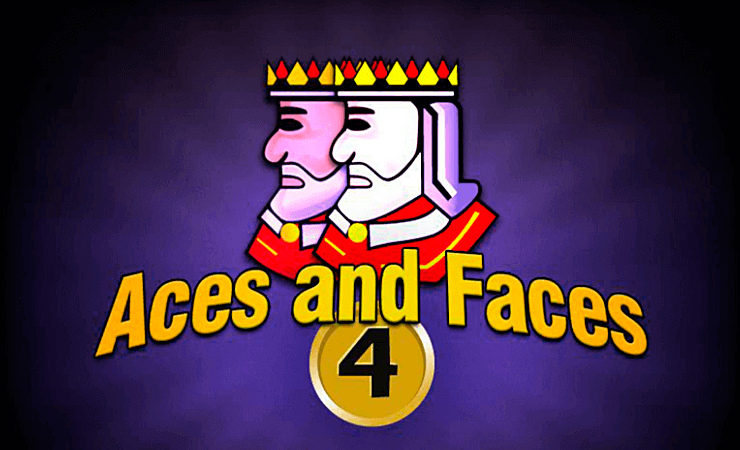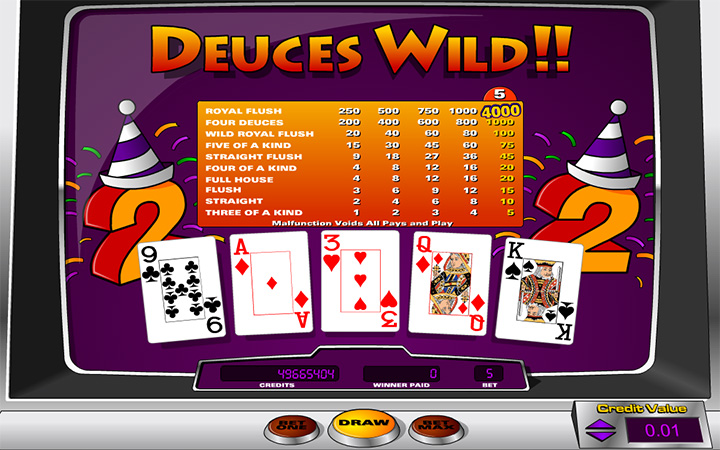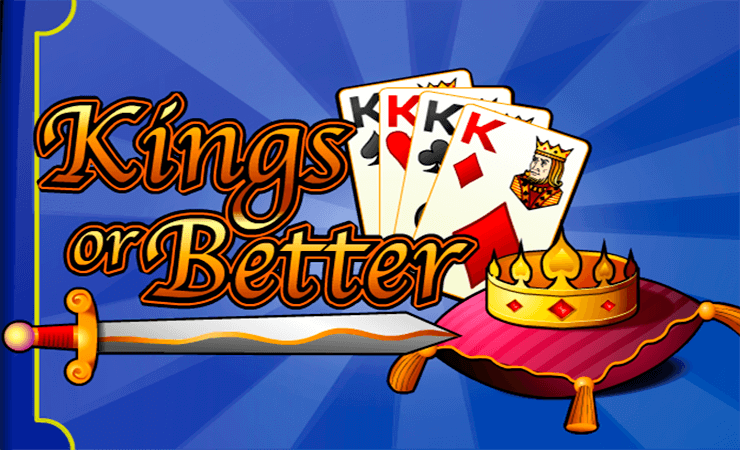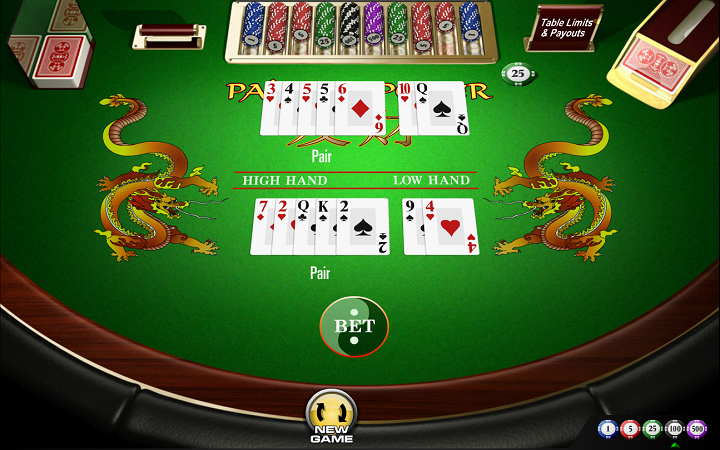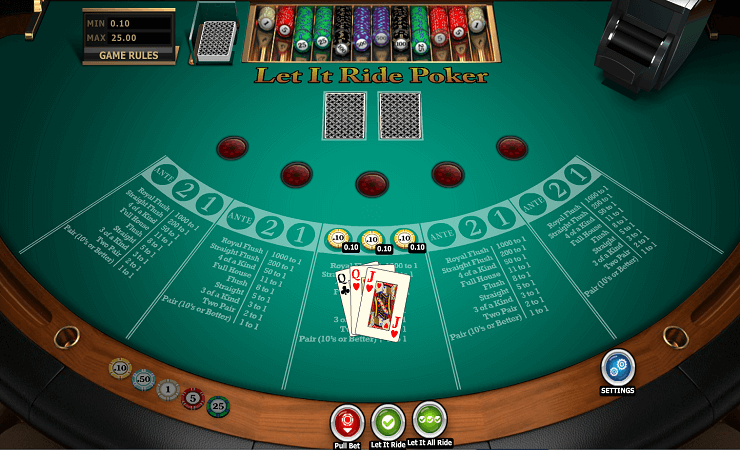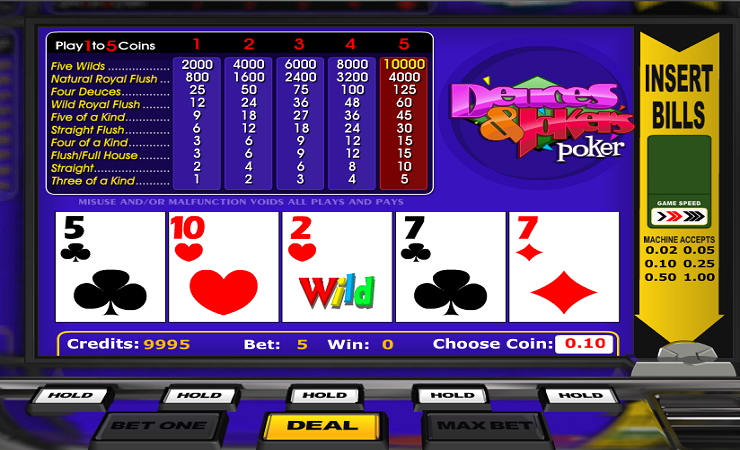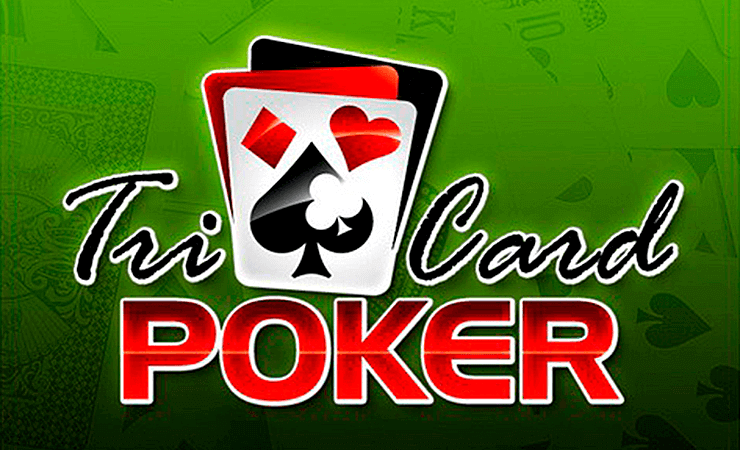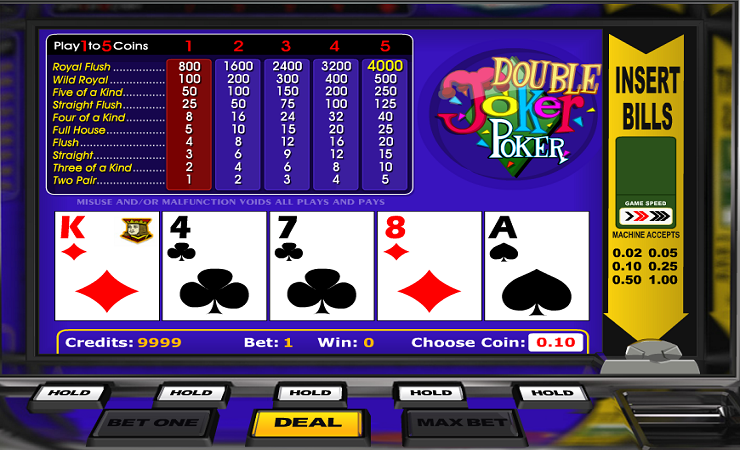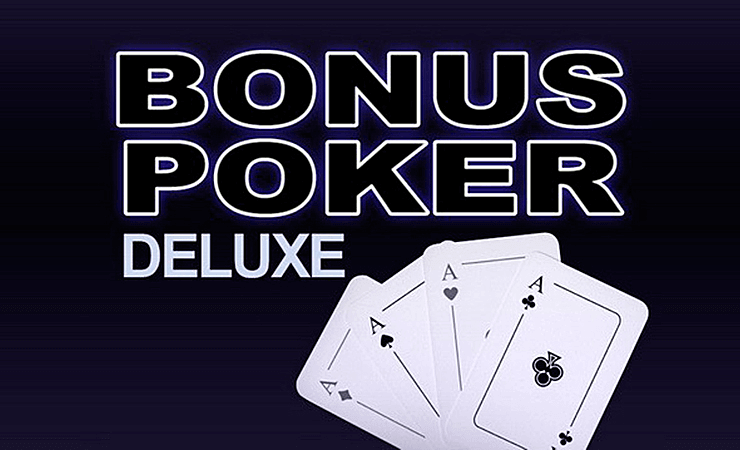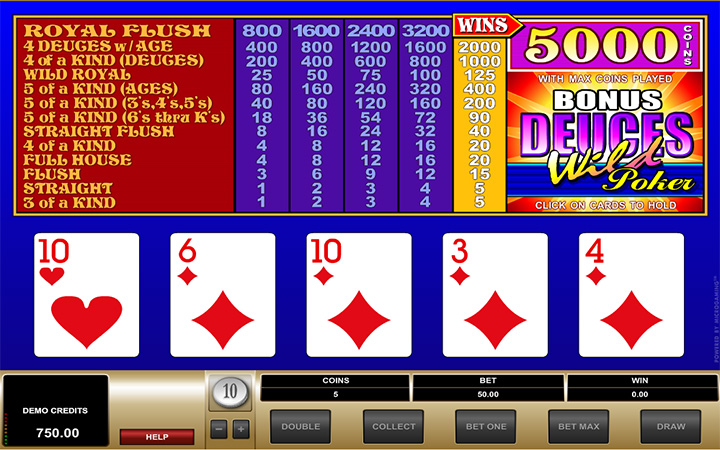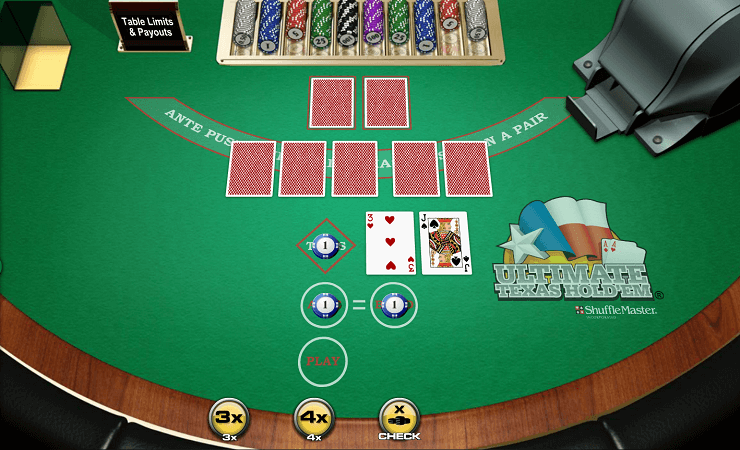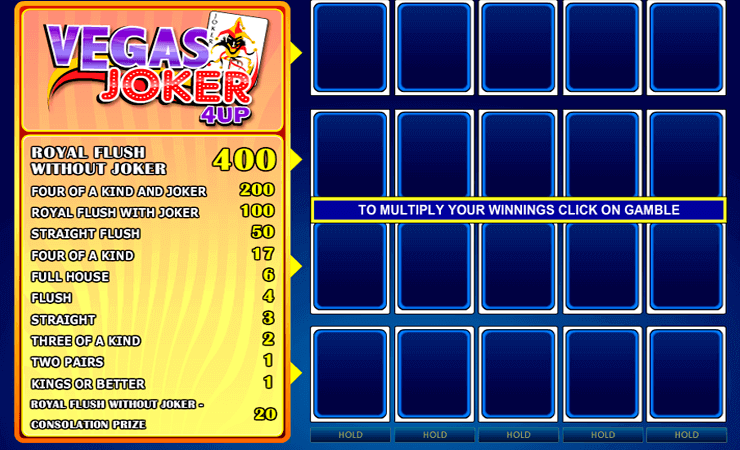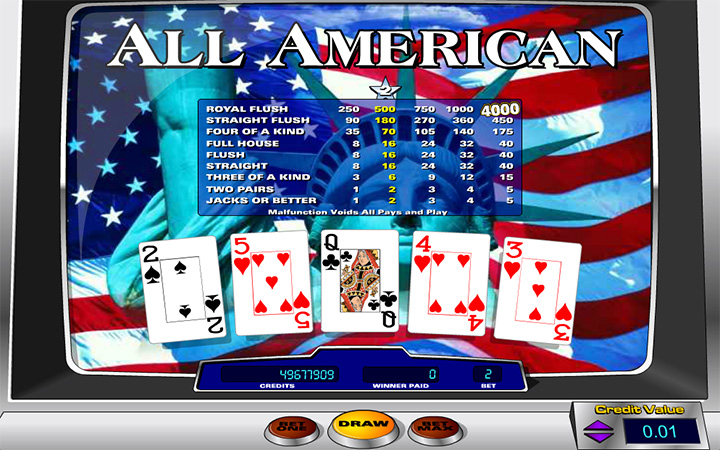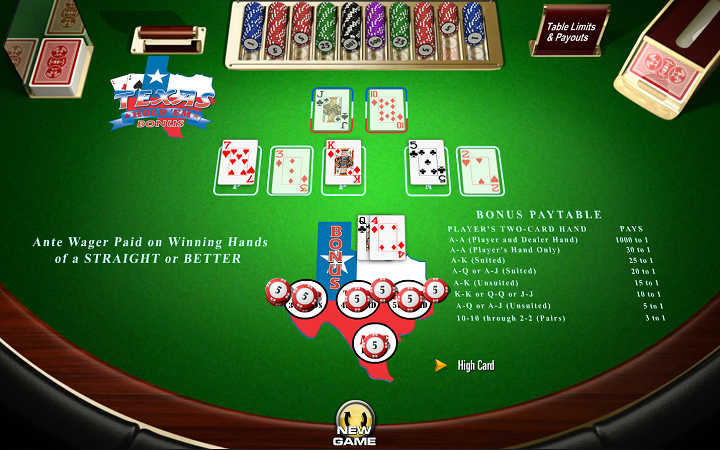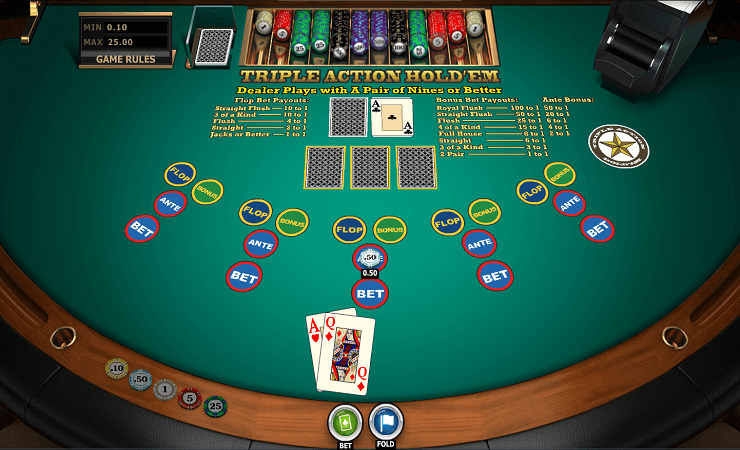Video Poker
Most of the card games are invented by Spanish sailors during long and boring journeys, but poker is the exception. It is a genuine U.S. game, dating back to 19th century. There are records which show that poker is being played in New Orleans, Louisiana in 1829 – they were using 20 card decks back in those days. Poker spread to the entire country by Mississippi riverboats, these were the “mobile casinos” of that era. Gambling was a popular hobby in the 19th century and poker managed to become popular in a short time, because there was no “house advantage” in the game. This is still true for modern poker too, if the cards shuffled and dealt fairly, no player (including the house) has an advantage over another player. Poker is a fair game, literally.
Latest Video Poker
Born In the US (History of Poker)
Poker was born in the U.S. and became legendary in the same country. This is mostly because of the World Series of Poker Tournaments organized by the casinos. Professional poker players are like movie stars in the U.S., they even publish books about their life and “tactics”. Poker is also an easy-to-learn card game, but hard to master. Traditionally, four people are needed to play poker. Each player gets five cards. The goal is to form a special combination with that hand, which is based on a rank system. All possible poker hands are (from highest to lowest):
Royal Flush - Straight Flush - Four of a Kind - Full House – Flush – Straight - Three of a Kind - Two Pair - One Pair and High Card.
After the first dealing, betting rounds begin. Each player checks his/her hand and tries to guess the others. The player may “call” (ask for to match his/her bet) or “fold” (leave that hand) depending on the hand. Of course, the player may try to bluff too, it is a very important part of poker gameplay. You may have a low-ranked hand, but nobody knows that except you. If you successfully bluff, you can trick other players to believe that you have a better hand than theirs and force them to “fold”, which makes you the owner of all poker chips on the poker table.
How to Play Poker
Basics of Poker
Poker is a popular card game which dates as back as the 19th century. In centuries, lots of variations are added to the game but the main goal is still the same: creating the better hand. Or, bluffing other players that your hand is superior. Traditionally, you need four players to play poker but a lower or higher number of players are allowed too. One of the players is chosen to be the dealer for each round. But nobody plays against the dealer and he/she doesn’t have an advantage, the odds are same for each player at the poker table. This is unique to the poker game; there is no “house” or “house advantage”.
The dealer shuffles the deck, the player sitting right to him cuts the deck and the dealer starts to deal cards starting from his left. The cards may be dealt as visible or face-down, depending on the variation. After the first dealing, the players make the first bet, which is sometimes called “ante”. This is a French word and represents the wager amount that is required to enter that round. Ante (and the total wager) can be raised during the round.
Poker Rules
The goal of the poker is to create the better hand. Numeric values of the cards don’t matter, there is a card hierarchy and some hands are better than the others. The players try to form this hand or convince the other players that they have a better hand by bluffing. Depending on the hand, a player can raise the total bet, call the bet or fold. For example;
- Call: The player can “call” when it is his turn; this means he is asking other players to match his bet.
- Raise: The player can match the current bet and raise it even higher.
- Fold: The player can fold and leave that round. He cannot take back his bet, folding only prevents losing more.
In practice, usually only two players are left in the round after all of these callings. This is the most intense part of the game, because it is often represented as a “battle”. Nobody knows a player is bluffing or not except for himself. He may really have the upper hand or maybe, he has nothing. Sooner or later, they will reach the bet limit and forced to show their hands. The bet limit differs in every game; sometimes it may reach hundreds of thousands of dollars.
Poker Winning Hands (Card Hierarchy)
As we mentioned above, poker has many variations but the poker hand ranking (card hierarchy) always stay the same. From highest to lowest, poker hands are:
- Royal Flush: All cards in the hand belong to the same suit and they are the top five cards of that suit. For example, 10-J-Q-K-A is a royal flush. This is the best possible poker hand available. The possibility of getting a royal flush is % 0.0015.
- Straight Flush: All cards in the hand belong to the same suit and follow each other, but they do not need to be the top 5 cards. For example, A-2-3-4-5 is a straight flush. The possibility of getting a straight flush is % 0.0311.
- Four of a Kind: If the hand consists of four cards of a given rank, this is called four of a kind or quads. (The last and fifth card doesn’t matter.) For example, 9 Spades – 9 Hearts – 9 Diamonds – 9 Clubs and a random card is Four of a Kind. The possibility of getting Four of a Kind is % 0.024.
- Full House: This hand consists of three-of-a kind cards and a two of another rank. For example, 10 Hearts – 10 Spades – 10 Clubs – 3 Spades – 3 Diamonds is a full house. The possibility of getting a Full House is % 0.1441.
- Flush: This hand consists of five cards all of the same suit. For example, 3-7-9-5-2 (all Spades) is a Flush. The possibility of getting a Flush is % 0.196.
- Straight: This hand consists of five cards in sequential rank, regardless of their suit. For example, 9 Spades – 8 Hearts – 7 Clubs – 6 Spades – 5 Diamonds is a Straight. The possibility of getting a Straight is % 0.39.
- Three of a Kind: This hand consists of three cards of the same rank. (The other two cards don’t matter.) For example, 8 Hearts – 8 Spades – 8 Clubs is Three of a Kind. The possibility of getting Three of a Kind is % 2.11.
- Two Pair: This hand contains two cards of the same rank and two cards of another rank. (The last card doesn’t matter.) For example, 9 Spades – 9 Clubs – 3 Hearts – 3 Diamonds is Two Pair. The possibility of getting a Two Pair is % 4.75.
- One Pair: This hand contains two cards of one rank only. (The other three cards don’t matter.) For example, 9 Spades – 9 Clubs is One Pair. The possibility of getting a One Pair is %42.26.
Poker Strategy and Tactics
Poker strategies differ by the variation of the poker you are playing, but we can point out some general tactics and mention common mistakes of the beginners. First, do not fold early in the game. Beginners usually become nervous after the first dealing and plan to fold from that round, this is a mistake. Basically, don’t get bullied and start bluffing. In that regards, don’t play passively. You don’t need to have the best poker hand available; having a better hand than the other players is enough. Raise the bet if you have a good looking hand. Learn about basic odds and possibilities of the poker hands.
You can loosen up your gameplay if you are playing with fewer players, for example, 3. Fewer players mean that the possibility of someone having a strong hand is also lower too, so you can play more aggressively. Lots of players make a big Ante bet just to intimidate you, never fall for that and do not fold just because of the size of the entry bet.
How to Win At Video Poker Games
Poker practice is essential to become a better player, and video poker games are the best way to do that. You can play free poker games online for fun and for practice; they won’t cost you a dime (unless you want to play poker for real money). Video poker strategy is determined by the variation you are playing, but in general, we recommend checking out the bonus payouts of the machine. Most of the video poker games have fancy names; this usually gives you an idea about their payout systems. For example, Jacks or Better video poker games award you with as high as nine times of your total bet. Analyze your hand, try to calculate the possibilities and be the “smart” player, not the “lucky” one. Other than the bluff, all poker strategies and tactics can also be used in the video poker machines too.
